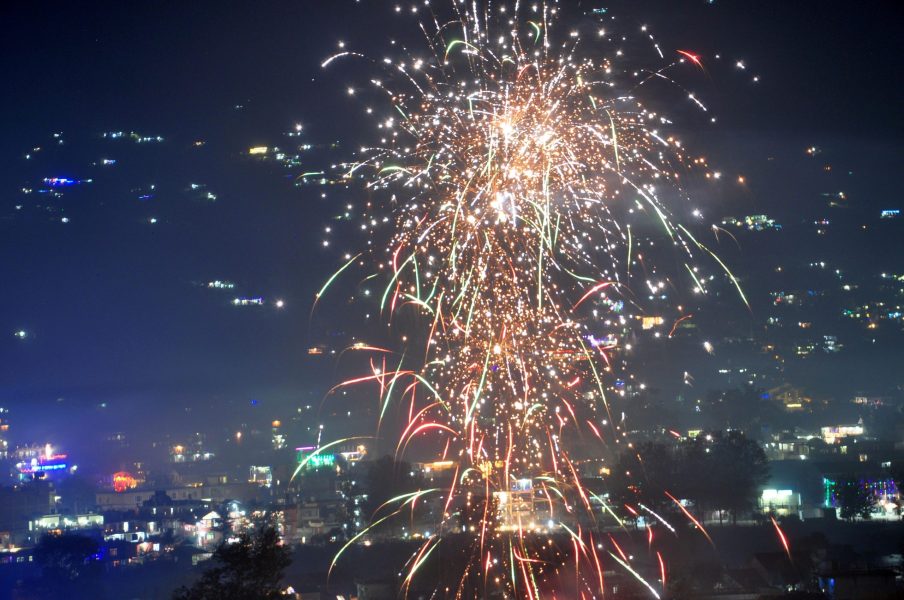
Delhi’s blanket ban on firecrackers: A case to make it truly effective

Anticipating the degradation in air quality in October, the Delhi government has announced a comprehensive ban on the production, sale and use of all types of firecrackers in the national capital till January 1, 2023. Keeping in view the dangerous condition of Delhi’s air pollution during Diwali for the last three years, Delhi environment minister Gopal Rai has reinstated the firecracker ban in Delhi for the fourth year in a row. This year, there will also be a restriction on the online sale/delivery of firecrackers.
Will the ban to contain the pollution during the festive season be different this year in terms of checking the deteriorating air quality or will it remain an issue of conjecture till the actual figures flash out, categorising Delhi’s air in terms of severity?
A case in point: Empowering RWAs
Speaking exclusively to The Federal, Debadityo Sinha, a noted environmentalist working with Vidhi Centre for Legal Policy, outlined two broad measures that will make the current ban on the sale and use of firecrackers more effective. Acknowledging the severe shortage of police personnel and the demographic clusters typifying Delhi, Sinha said empowering resident welfare associations (RWAs) with prior training and requisite power may go a long way in creating awareness among citizens.
“Engaging school and college students through workshops and seminars will bring about a behavioural change. This ‘behavioural’ change can bring about lasting outcome. The approach — of the authorities and citizens — should be one of preventive and reactionary. Reactionary approach, as seen over the years, will be short-lived and will defeat the true objective of a ban,” added Sinha.
Also read: Delhi is looking to neighbouring states for compensatory afforestation; here’s why
Common action plan among NCR states
A unified task force appointed by respective chief ministers of National Capital Region (NCR) states working exclusively on the issue of pollution mitigation may be helpful as the issue of “pollution” isn’t restricted to a particular region, said Ashish Jain, founder director of Indian Pollution Control Association, an NGO specifically working to chart out global environmental solutions.
Going a step further, he noted that various committees set up by the governments — central and state — must consider the NCR region as one, without delineating policies for their respective states. It must be a year-long concerted attempt and not a standalone three-month effort to address Delhi’s air woes, reiterated Jain.
Firecrackers make up a miniscule portion of major pollutants in Delhi. A mix of factors such as Diwali fireworks, urban emissions from vehicles, cooking, lighting, waste burning, industries, power plants and construction activities are responsible for such extreme levels of pollution, Jain added.
Revisiting 2021
Last year, the state government announced a complete ban on firecrackers till January 1, 2022. The administration also ran an aggressive campaign, involving 15 special teams at the district level, against the sale and use of firecrackers. Emissions from firecrackers and farm fires had pushed the capital’s 24-hour average air quality index for the day after Diwali to 462, the highest in five years.
DPCC and its mandate
Outlining the mandate of the Delhi Pollution Control Committee (DPCC), its Member Secretary K.S. Jayachandran said that the agency was a scientific body, mainly engaged in providing research-based scientific inputs to enforcement bodies.
Commenting on the efficacy of a blanket ban on firecrackers, he added that as citizens, we need to understand why the bans are enforced and should read reports of research organizations to interpret the severity of the problem. Illegal sales/ black marketing is a menace which negates government’s efforts to mitigate the issue of air pollution.
The ban by the Supreme Court
In 2017, the Supreme Court had banned the use and sale of toxic crackers on the basis of a petition filed by two infants, a six-month-old and a 14-month-old. They had said the air pollution caused by various factors, especially firecrackers, had made Delhi a gas chamber. The apex court permits minors to file petitions to protect their fundamental rights through parents or guardians.
The court had said that the sale of green and improved crackers would be only through licensed traders. It dismissed arguments that bursting crackers was a fundamental right and an essential practice during religious festivals like Diwali.
Concurring with the apex court’s observation, the National Green Tribunal (NGT) had imposed a total ban on the sale or use of all kinds of firecrackers in the NCR in 2020 — from November 9 midnight to November 30 midnight.
District magistrates were directed to ensure that firecrackers were not sold and violators would have to pay compensation. The green tribunal had reasoned that the “right to business is not absolute. There is no right to violate air quality and noise level norms”.
Green crackers: Traders’ plea for exemption
Amid a blanket ban on the storage and manufacturing of firecrackers till January 1, 2023 in Delhi, traders associated with the business have asked for exemption on green firecrackers, saying that they have incurred huge losses.
But experts and studies show that green crackers are not a viable alternative as it still produces emission. Green crackers use alternative, yet harmful chemicals like potassium nitrate and aluminium instead of magnesium and barium, and carbon instead of arsenic and other harmful pollutants. According to a report in The Hindu,
green crackers undergo chemical change to ensure reduced particle emission and a lower sound yield.

